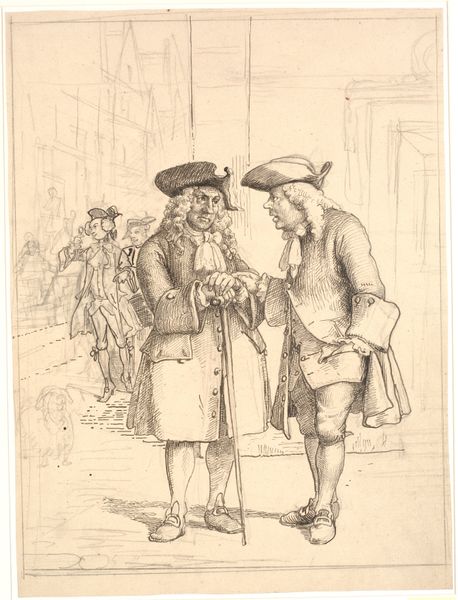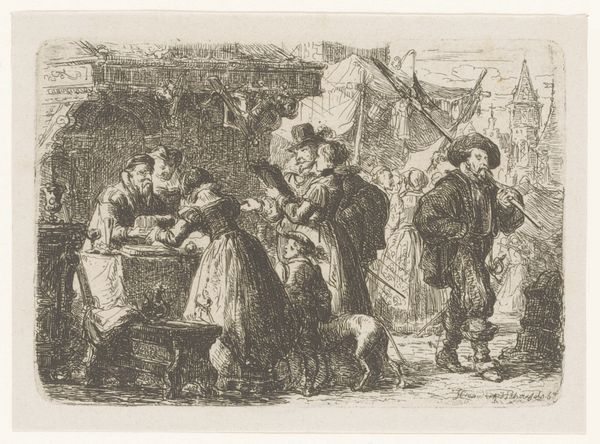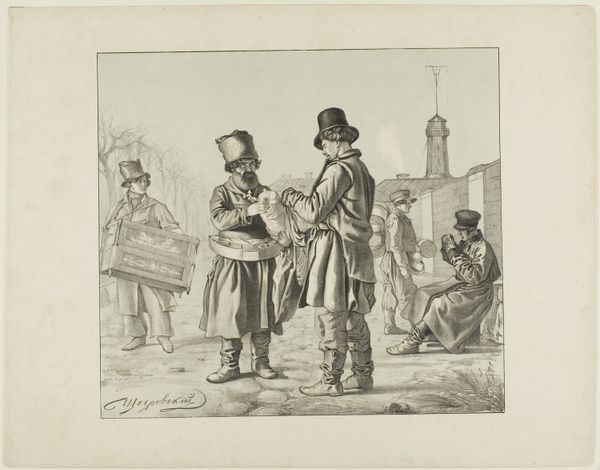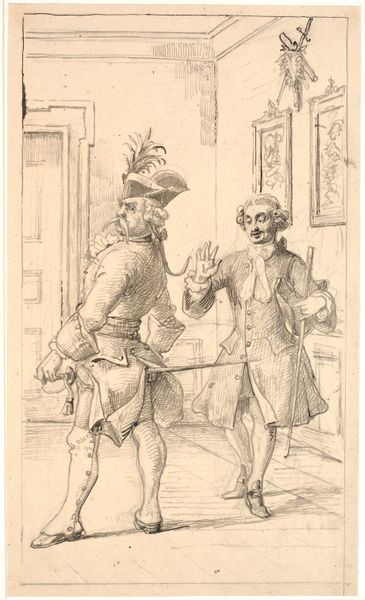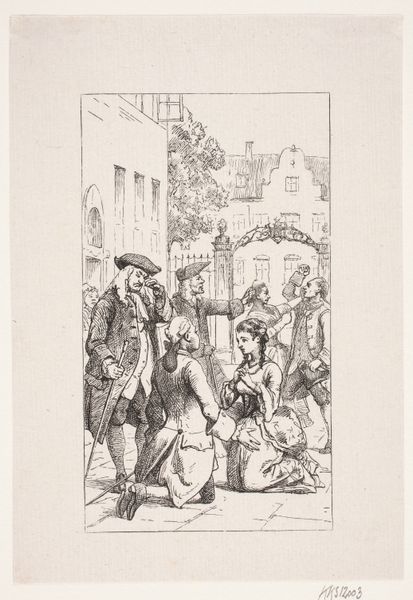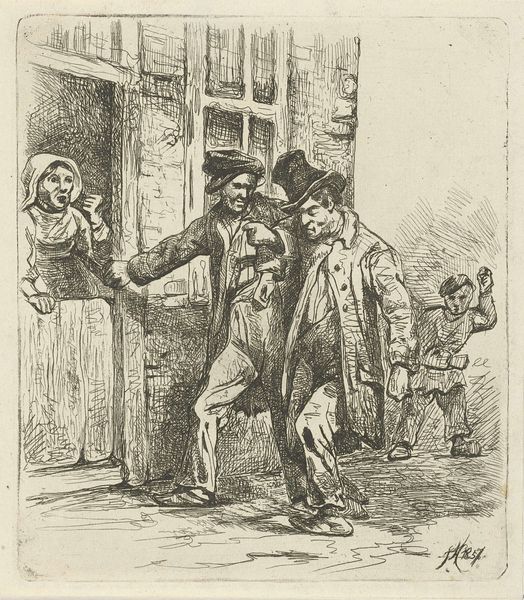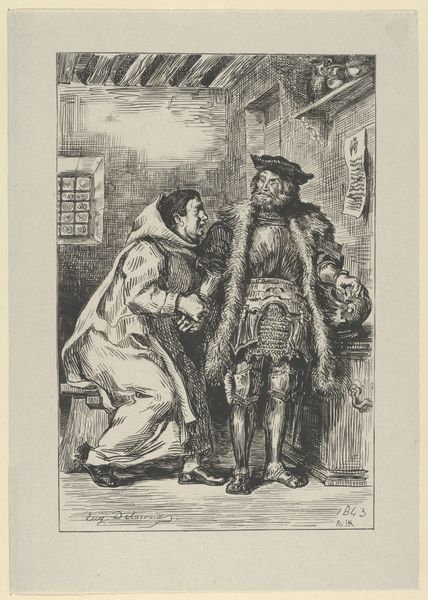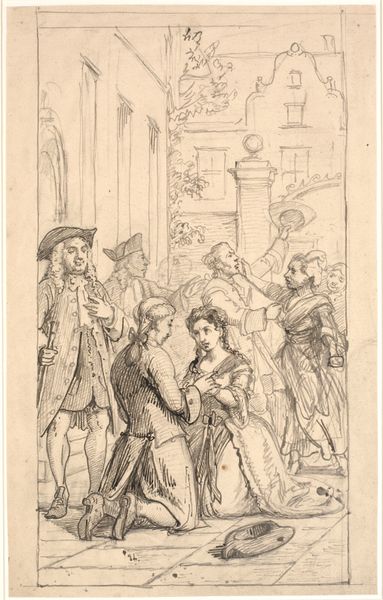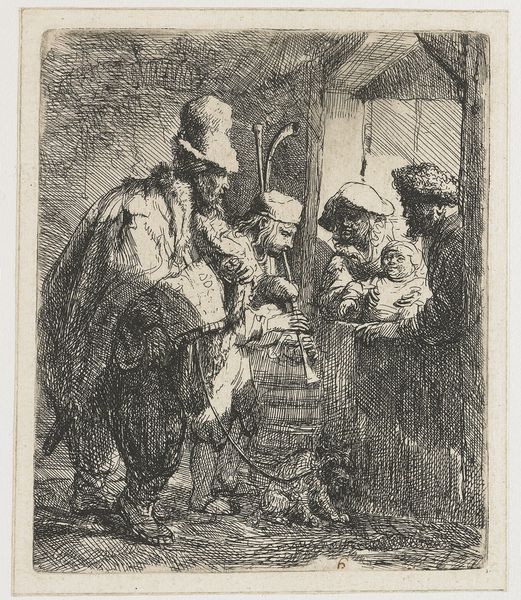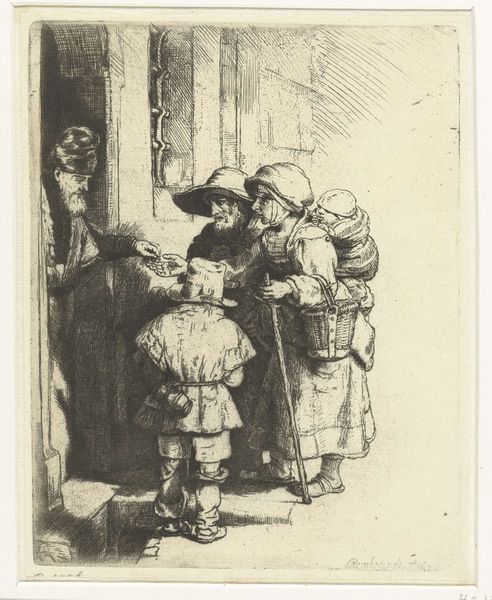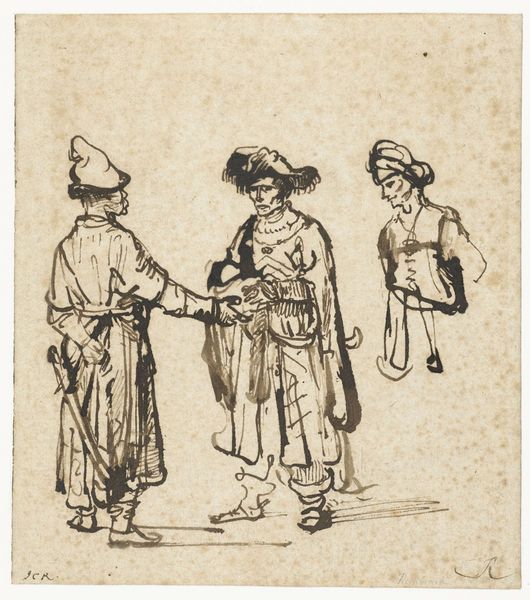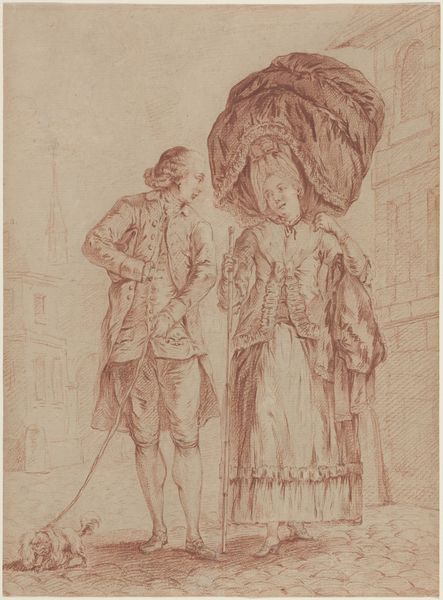
drawing, print
#
drawing
# print
#
boy
#
men
#
cityscape
#
genre-painting
#
musical-instrument
#
realism
Dimensions: Sheet: 18 13/16 × 13 3/8 in. (47.8 × 34 cm) Plate: 9 1/8 × 6 1/8 in. (23.3 × 15.5 cm)
Copyright: Public Domain
Curator: This is "Pifferaris," a print by Charles Jacque, created in 1864. What catches your eye initially? Editor: Immediately, the somber tone jumps out at me, even amidst this bustling cityscape. It feels less like a celebration and more like… almost a forced performance. Curator: Interesting. Let’s contextualize this. Jacque was a key figure in the Realist movement, deeply influenced by the Barbizon school. This print reflects that dedication to depicting everyday life, focusing on the pifferari – traveling musicians, often young boys, who performed for money. Their presence speaks volumes about the socio-economic realities of 19th-century urban life. Editor: And the setting adds to that understanding. The architectural details offer a glimpse into urban stratification. Are we to assume this depicts street performers trying to eke out an existence within certain districts of Paris? I wonder how ideas around social mobility played into the public perception of these musicians? Curator: Absolutely. We can also read this through the lens of child labor. While seemingly innocuous, it also brings to light complex questions of labor, particularly how childhood intersected with economic pressures. What commentary, conscious or otherwise, might Jacque be making here? Editor: Well, I think it invites a wider discussion about representation and agency, too. We're looking at these young musicians through the artist’s, and subsequently our, perspective. Were they aware of their position, as performers but also as vulnerable figures within the cityscape? Curator: Good point. Furthermore, think about how music operated as a social leveler during that era. These children, instruments in hand, navigated complex societal dynamics. The "Pifferaris" offers a nuanced portrait of Parisian streets, not just architecturally, but as stages of social interactions. Editor: Looking closer, their costumes almost feel deliberately worn, performative, yet somehow still worn. It hints at both pride and… resignation, perhaps? What does this tell us about constructions of poverty and aesthetics in that time? Curator: Precisely. The power dynamics here extend to us, the viewers, centuries later. Reflecting on that position allows a more holistic understanding. Editor: I'm leaving this with so many questions about the boys, and the music...I'll be thinking about that for awhile! Curator: Me too! Charles Jacque gives us so much to think about in this etching.
Comments
No comments
Be the first to comment and join the conversation on the ultimate creative platform.

